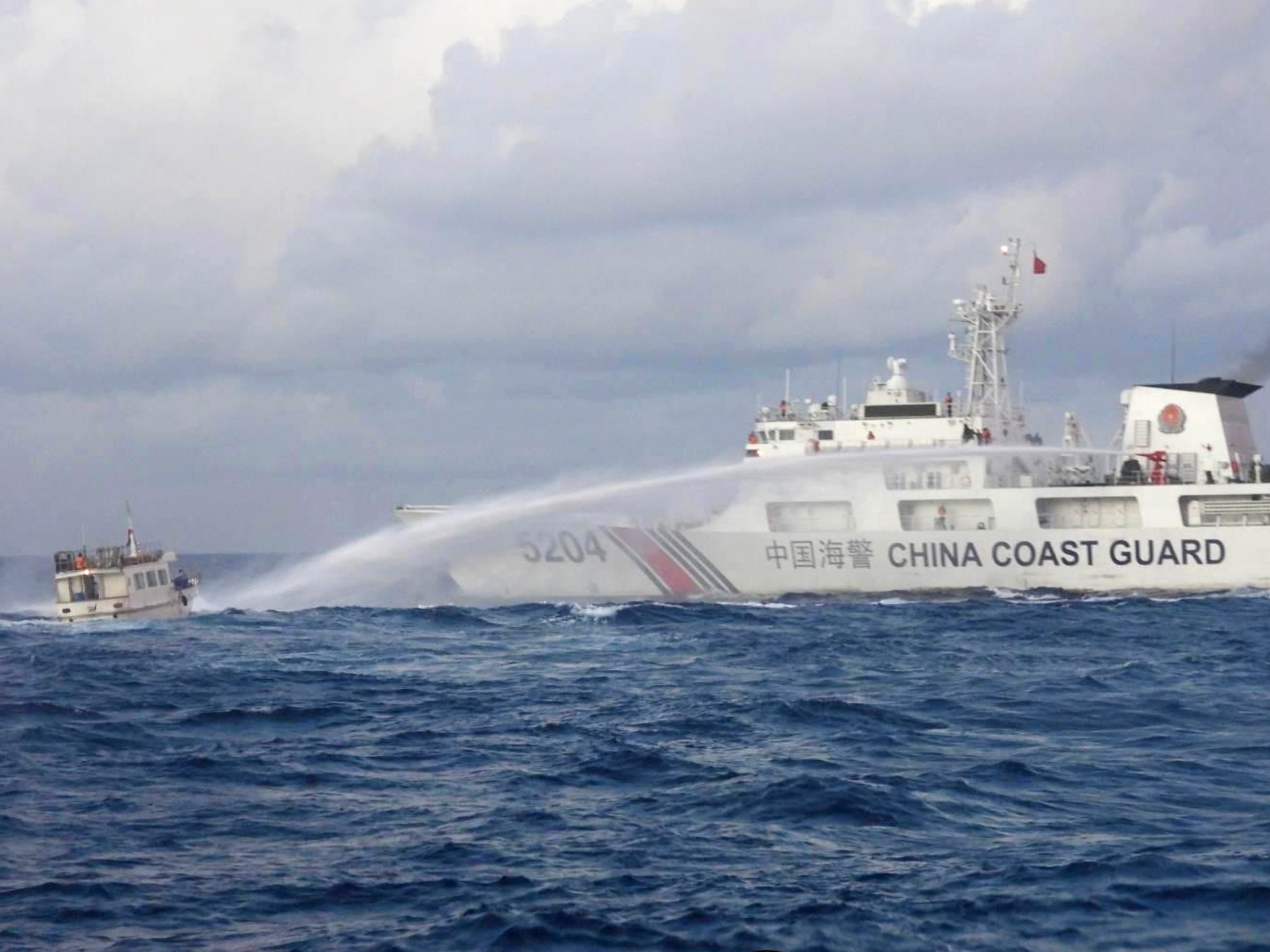Manila, Philippines – On February 2, 1995, just over two years after the last American soldiers had left the Philippines, a Filipino navy patrol boat found a newly built structure on stilts flying a Chinese flag on a submerged reef, some 240 kilometres (149 miles) off the Philippine island of Palawan.
The sailors had gone to Mischief Reef in the South China Sea after a Filipino fisherman reported being taken captive by Chinese soldiers in the area. Beijing, which claims nearly all of the South China Sea, dismissed the allegations and insisted that the octagonal structure on the reef – which was equipped with a satellite dish for communications with the Chinese mainland – was merely a shelter for its fishermen.
The sailors had gone to Mischief Reef in the South China Sea after a Filipino fisherman reported being taken captive by Chinese soldiers in the area. Beijing, which claims nearly all of the South China Sea, dismissed the allegations and insisted that the octagonal structure on the reef – which was equipped with a satellite dish for communications with the Chinese mainland – was merely a shelter for its fishermen.
Today, Mischief Reef is a fully fledged Chinese military outpost, with a 3,000-metre airfield runway, radar systems and warehouses probably housing surface-to-air missile systems on land reclaimed from the sea.
Chinese navy and coastguard vessels patrol the area, harassing Filipino troops, including by using military-grade lasers and water cannon, and blocking Filipino fishermen from the rich fishing grounds in the waterway by ramming their boats and seizing their catches.
The reef, which is submerged at high tide and part of the Spratly Islands, is nearly 1,000km (620 miles) from China’s Hainan Island.
Beijing has now fully militarised a total of three islands in the Spratlys, according to officials in the United States, and maintains seven military outposts in the area.
Original from www.aljazeera.com
